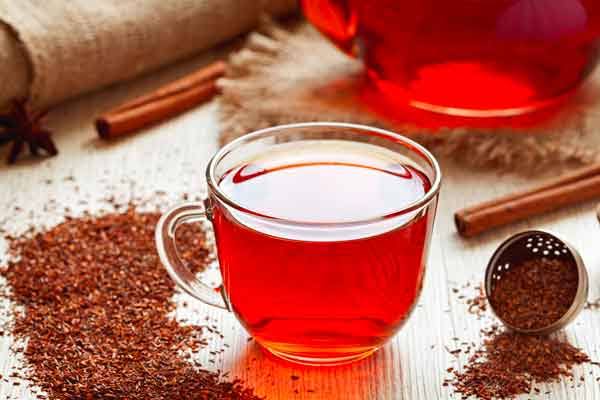Red tea: Do you know rooibos?
Red tea, or rooibos, is on the rise. This drink without theine, rich in anti-oxidants, is taking an increasingly important place in the “infusion” shelves of supermarkets. But do you really know what red tea is?
WHAT IS ROOIBOS?
Red tea does not come from the tea plant but from a small shrub that grows only in South Africa.
It is after fermentation that its leaves take on the brown-red hue to which it owes its name. It should not be confused either with hibiscus (also called karkadé or bissap), giving a dark pink drink, widely consumed in Africa.
There is also “green rooibos”: it is unfermented rooibos, even richer in antioxidants. With light green leaves, we obtain an infusion with a taste similar to that of green tea, without astringency.
THE BENEFITS OF RED TEA
Devoid of theine, rooibos is not exciting. It can therefore be drunk by anyone and at any time of the day. Do not hesitate to mix things up and add a few lime leaves, for a sedative action, or mint, digestive. Or cinnamon and a little honey, for a warm and gourmet note.
Calorie-free, draining, it is rich in antioxidants that fight against cell aging: a 20 cl cup provides 60 to 80 mg. In Africa, traditional medicine even uses it in local applications to relieve irritation and itching.
HOW TO PREPARE IT?
Rooibos contains very few tannins, which give tea its bitterness and astringency. It therefore keeps a sweet flavor if it is left to infuse for a long time. Fans even find it better.
Count a teaspoonful per cup, or three tablespoons per liter. Pour the simmering water over the leaves and let steep for five to ten minutes. It can be served hot with milk and sugar, or it can be drunk plain. Other possibilities: poach fruit (cherries, pears, plums, etc.) or put it in jelly in a fruit terrine.
